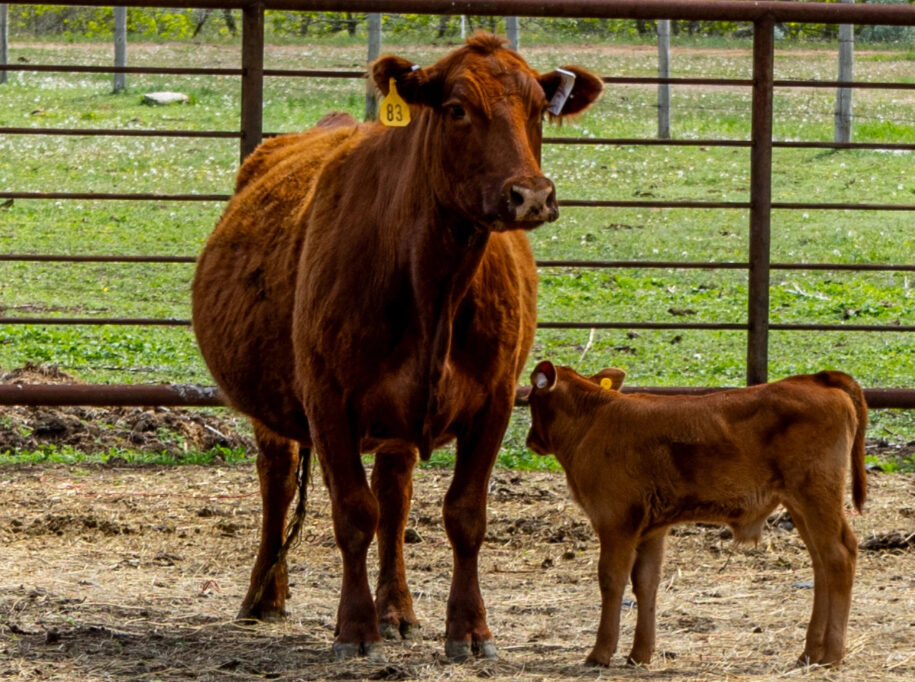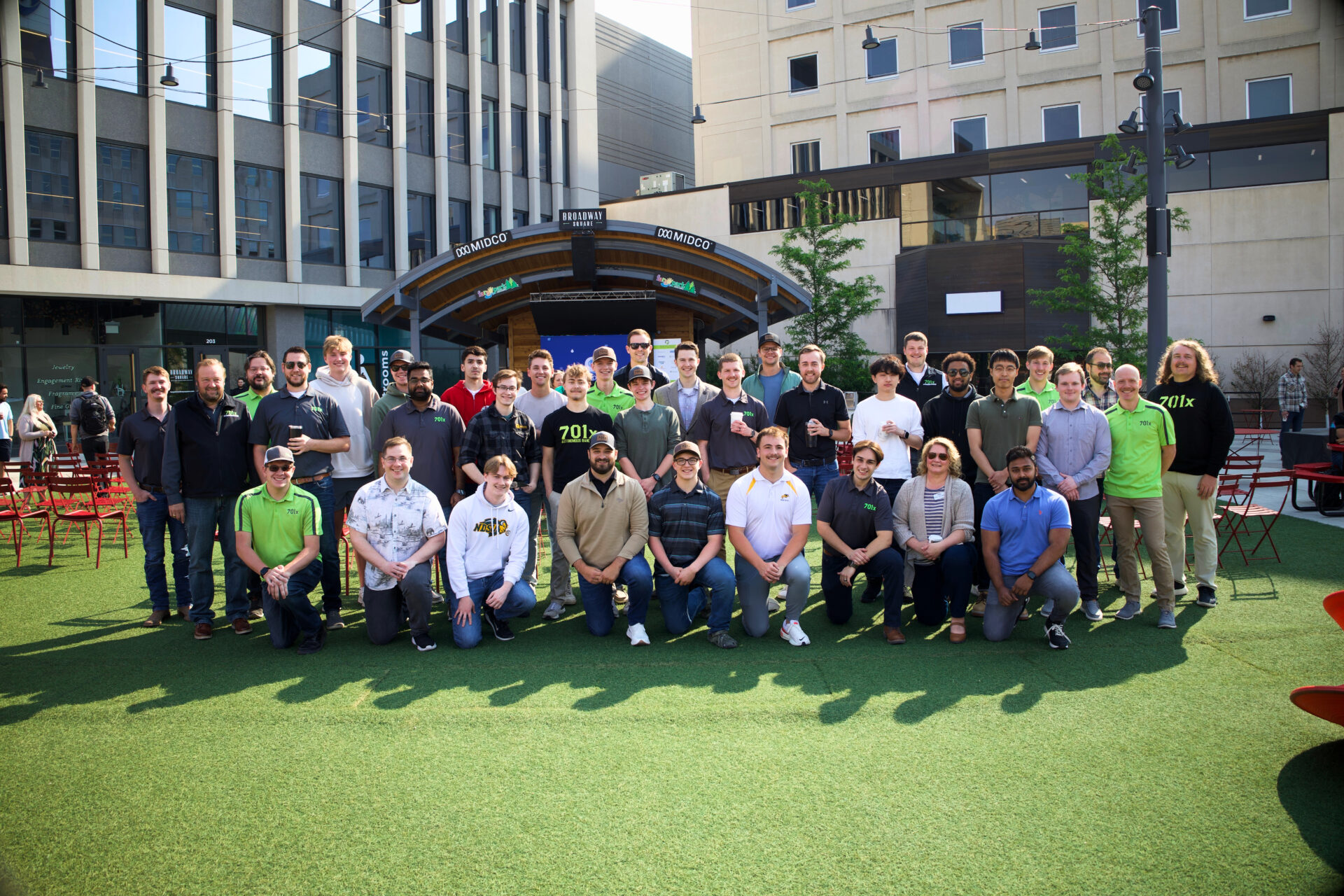Fargo, North Dakota-based 701x may have started life as a company making simple GPS tracking tags for livestock, but its founders quickly learned there are many more problems around the ranch such technology could solve.
Animal health, vaccination, and breeding productivity are all areas 701x now addresses with its offerings, which have expanded beyond ear tags to include a software platform.
“Our whole goal is just to bring products that truly benefit ranchers and solve their pain points, make things a little more automated and easier,” says Max Cossette, who was employee number one at the company and is VP of business development.
Last year, the company acquired livestock industry registry platform Digital Beef, connecting 701x more closely with important beef industry associations. With the software, users can report individual animals’ performance data to their respective association in order to receive registration certificates and performance ranking data within the breed.

AgFunderNews (AFN): How and why did the company start?
Max Cossette (MC): Kevin Bifford [701x founder and CEO] had a previous business building automation machinery for pharmaceutical companies, so he’s very familiar with that side of things.
He grew up on a ranching operation in Killdeer, North Dakota, and his sisters were still ranching and kept complaining about problems with their cattle.
Kevin saw the need for like a GPS ear tag to let his sisters know when the cattle were getting outside the fence. Then he saw that there was a really large market out there [for this technology].
I came on as the first employee back in March of 2020 and started researching the beef market and realized that it hadn’t had any new digital technology in about 20, 30, years. As I was doing research I found out there are a lot more things ranchers want then just GPS tracking and getting an alert when their cow gets outside of a fence.
AFN: What are some of those specific problems?
MC: When the GPS really becomes important is when there is a health issue. If an animal gets sick, [ranchers] want to know where it’s at so they can go treat it.
Also, they don’t know which bulls are breeding and being productive and which ones are being lazy out in the field. They’ve had instances where they’ve DNA-tested calves and, for example, discovered that of two bulls, one bred 49 cows of 50. But you have no idea unless you’re standing out there physically watching these cattle breed. So we added bull mounting detection to our tag.
Then the seedstock folks, which are these pure-bred breeders, do a lot of artificial insemination to try and get good genetics into their herd. They have to time when these animals are going into heat, so they want to know a precise time these animals are in estrus. They only get about a 50–60% conception rate when doing artificial insemination or embryo transfer, so we added estrus detection to our tag.
Another big labor point [for ranchers] is that during calving season is that they have to get up at all times of the night to go check on their calves to make sure they don’t lose one. So we recently built a calving testing algorithm and we’re testing it with some customers in our own ranch.
Our whole goal is just to bring products that truly benefit the rancher and solve their pain points, make things a little more automated and easier.
AFN: Which offerings do ranchers tend to use most?
MC: Our highest adoption is on bulls. It’s the out-of-fence notification, because bulls will jump the fence and try to breed with the neighbors cows, and the health alerts, since bulls are the most susceptible to get sick.
Bull-mounting detection is also a huge indicator of which [animals] are actually productive, because these bulls are $8,000–$10,000 apiece. Our tag is $150 for the first year.

AFN: You acquired Digital Beef in 2024. How did that acquisition come about?
MC: In addition to the tags, we built this herd management software. The two big pain points in software for ranchers is that they’re collecting data for animals when they’re calving, and they’re collecting data when they’re working animals through the shoot—for preg checking [pregnancy checks] or when they’re given vaccination.
We built a mobile app that works offline. When you have a new calf you can just quickly enter its information and once you’re back online it all syncs up.
We were trying to get more people to use our software. All these breed associations require their members to report certain data. So if you want to have a pure-bred registered animal, you have to report birth weight, weaning weight, yearling weight, the calf’s foot score.
We’re collecting all that data in our herd management app, so myself and Sam Fisher, our VP of sales, personally went to all these breed associations and told them about our app. The executive directors were like, “Oh that is so great, our members would love that.”
A couple of them told us to go talk to Digital Beef and try partnering with them.
Dr Massey, the CEO and founder of Digital Beef told us, “You know what, I’m 73, years old. I’m not really looking to partner with anyone at this moment, but I would be willing to sell the business.” And he had five-year contracts with all these associations.
We had about 350 ranches on our herd management app, and most of them were using our tags as well. But then once we purchased Digital Beef, we had 9000 ranches and 18,000 users on the platform.
AFN: How was the fundraising process for the recent Series A?
MC: Challenging but we got through it.
Just to give a little background, Kevin Bifford put in over $6 million of his own money and funded the company for the first three years. We raised a $5 million seed round where one individual took the whole round, back in 2023.
Throughout 2024 we raised the Series A, which we completed back in March. It took a little time but we got through it, and are happy to keep moving forward.
AFN: Where will the new capital go? What are you working on next?
MC: We just released satellite connectivity on that pro tag back in April, and that’s really opened up a whole new market for us. We weren’t really able to hit the cattle in western states (Colorado, Wyoming, Montana) because cell service was limited out there.
And now we’re working on rebuilding some of the registry software so that it’s really quick and easy to onboard.




